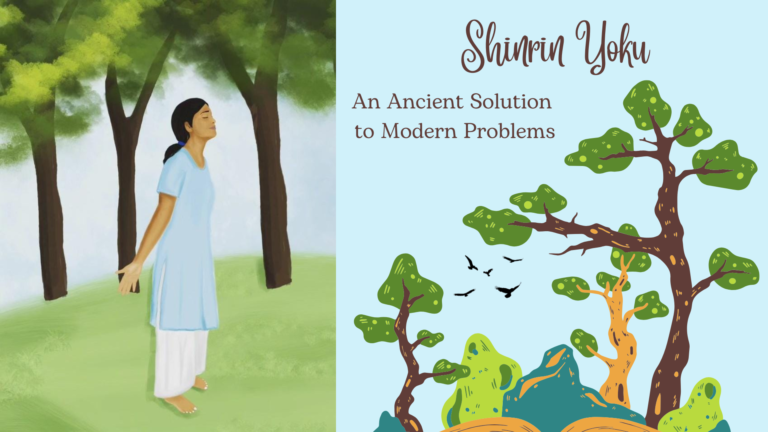by Neha Bhagat Sangar

A Divine Symbol of Harmony
Lord Dattatreya stands as one of the most profound symbols of balance between divine wisdom and natural harmony of mother earth. Known as the combined form of Brahma (the creator), Vishnu (the preserver), and Shiva (the destroyer), he represents the cycle of life that sustains the natural world.
Far beyond religious boundaries, Dattatreya is the epitome and the essence of coexistence, compassion, and the unity of all living beings.
The Birth of the Adi Guru
Born to Sage Atri and Mata Anasuya, Dattatreya ; datta meaning “given” , Atreya referring to the name of sage Attri to whom he was born. He was blessed by the three supreme deities Brahma, Vishnu, Mahesh—hence the name Dattatreya. From his early life, he renounced materialism, becoming a wandering monk who lived in complete harmony with nature.


He is also known as Adi Guru (the first teacher), he shared universal truths meant for everyone, regardless of caste, creed, or faith. His teachings went beyond rituals and focused on self-realization, nature heaking, simplicity, and awareness of the natural order and rhythm of earth.
Learning from Nature: The 24 Gurus
Perhaps the most fascinating aspect of Dattatreya’s philosophy is his reverence for nature as a teacher. He learned from 24 natural gurus—the elements, creatures, and phenomena aroundhim. Each became a source of wisdom, some of them being mentioned below
Earth: Taught patience, forgiveness, and endurance.
Water: Symbolized purity and adaptability.
Air: Demonstrated freedom from attachment.
Fire: Represented purification and transformation.
Sky: Reflected boundless consciousness.
Ocean: Showed calmness amidst constant inflow.
Spider: Revealed creation and dissolution from one’s own essence.
Snake: Taught detachment and adaptability.
This reveals how every aspect of nature holds spiritual truth. For Dattatreya, observing the world was an act of meditation—a reminder that life’s greatest wisdom often flows from the simplicity of natural existence.
Avadhuta Gita: The Song of the Free Soul
Dattatreya is also known as a Param Avadhoota, representing the highest stage of spiritual realization where one has gone beyond all worldly conventions and limitations.

Attributed to Lord Dattatreya, the Avadhuta Gita expresses the realization of one who has transcended illusion. Rather than philosophical debate, it offers direct insights into the oneness of all life.The text is a relatively small, eight-chapter work that gives voice to the highest conclusions of Advaita Vedanta as realized by a truly liberated, “Avadhuta” state of being.
The text, has its mention in Dattatreya upanishad in Atharvaveda, teaches that everything—human, animal, element, and cosmos—is pervaded by the same consciousness. This idea aligns beautifully with the modern concept of ecological unity: when we recognize all forms as divine, we naturally treat the environment with respect and care.
A Wandering Sage Beyond Boundaries
Dattatreya lived as a Param Avadhoota, a liberated being who wandered freely across ancient India—from Mysore through Maharashtra, and into Gujarat as far as the Narmada River.He initiated countless seekers, without discrimination of religion, gender, or background.
Legends describe him as unconventional sometimes meditating in solitude, sometimes engaging in worldly life to demonstrate detachment even amidst indulgence. His life was a living example of balance within duality, showing that true spirituality means being in the world yet untouched by it.
Symbols of the Divine Trinity
Our scriptures and imagery, show lord Dattatreya with three heads symbolizing creation, preservation, and destruction—the eternal cycle of nature. A cow stands behind him, representing nourishment and the Earth’s abundance. Four dogs, symbolizing the Vedas, accompany him as faithful companions, reminding us that wisdom follows purity of heart.
One scripture refers to a disciple finding Datta meditating on Gandhmadana Mountain. He attained realisation at a place not far from the town now known as Gangapur.
Together, these symbols represent an epitome of ecological and spiritual completeness. Inferring that a soul that is connected with nature evolves naturally.
Modern Relevance: Nature as the Ultimate Guru
Human race is coping with an issue of environmental imbalance and climate change, Dattatreya’s teachings hold renewed relevance. His message invites us to look at nature not as a resource but as a sacred guide, a Guru that is available unconditionally for a soul that opens its heart for that connection with nature around it.
he patience of the earth, the resilience of the ocean, and the adaptability of the wind—all reflect values that can help humanity restore balance with the planet.
If we listen to nature as Lord Dattatreya did, we begin to understand that preserving the Earth is not just an ecological duty—it is a spiritual calling.
A Message for Our times
In a time where every indiviual is struggling with inner peace, the avadootha geeta teaches us the simple wisdom of seeeking unity and connection with our soul through a connection with nature.
Lord Dattatreya’s vision of unity transcends religion, time, and geography. He reminds us that wisdom flows through the soil, the rivers, and the skies. Every tree, mountain, and creature can be our teacher if we learn to observe with humility.
In reconnecting with the rhythms of the natural world, we rediscover not only ecological harmony, but also a sense of inner well being and health. Scientifically also many researchers have proven the impact of nature on healing of the human mind and body.
but also the peace that comes from recognizing our oneness with all life.
“As a man thinks, so he becomes.”
In contemplating the divine through nature, as Dattatreya did, we move closer to both spiritual liberation and environmental harmony—two sides of the same universal truth.



